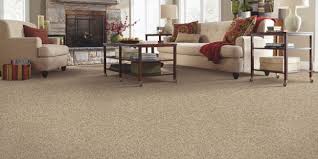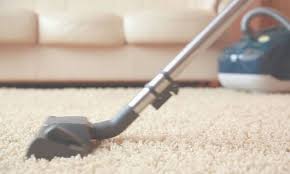How do you kill germs in carpet?
Carpets can become a repository of allergens such as dust mites, which trigger allergic reactions. Bacteria, such as methicillin resistant staphylococcus aureus, or MRSA, can sometimes be found in your carpet as well. To address bacteria and allergens in carpets, pursue more than one cleaning method.
Step 1
Vacuum frequently with a vacuum with a HEPA filter to remove dust mites. If possible, invest in a carpet with short piles so vacuuming is more efficient at removing the dust mites near the bottom. Vacuuming also sucks up pet hair and dander, another common allergen found in carpet.
Step 2
Steam-clean the carpet using hot water and an appropriate detergent safe for use with your machine. Add 1/4 to 1/2 cup of vinegar to the solution to help kill the bacteria found in the carpet. Read the owner’s manual first before adding an additive, such as vinegar, to a carpet-cleaning machine.
Step 3
Lower the humidity in your home and maintain levels below 50 percent. Excess humidity can cause dampness in your carpet, creating a perfect breeding ground for bacteria and dust mites. Run a can use a dehumidifier, install a dehumidifier on your furnace or install vents in the most humid rooms in the home, such as the laundry room, kitchen and bathrooms.
Step 4
Spray a disinfectant safe for fabrics on the carpet to kill the bacteria. If you want to kill a specific bacterium, clean with a disinfectant registered with the Environmental Protection Agency as an effective disinfectant for that particular bacteria.

How to Disinfect Carpet
If you have a carpet mess that needs to be not only cleaned, but sanitized, white vinegar does the job. Eco-friendly and non-toxic, it’s a great solution for busy households in need of a quick fix. Best of all, it’s completely safe for both kids and pets, safe to pour down the drain, and inexpensive to use. It can kill 99% bacteria, as well as a majority of molds and viruses. Adding it to a steam cleaner will do the double-duty of also using heat to kill pathogens, leading to a well-cleaned area.
You Will Need:
- Steam cleaner
- White vinegar
- Hot water
Steps to Disinfect the Carpet:
- Mix a solution of vinegar and water. If no ratios are given for the machine, you can use one part vinegar to one part water. For severe cases, use full strength vinegar. If soap-to-water ratios are given, replace the portion of soap with vinegar.
- Fill the detergent vessel of the steam cleaner with the solution. Do not overfill.
- Run the steam cleaner over the carpets, following directions for the machine.
- Allow the carpet to dry before use and traffic resumes. It works well to clean the carpets in the evening before going to bed so they can dry through the night. The vinegar smell will dissipate once the carpet dries.

Additional Tips and Advice
- It is always best to spot test carpet with a new cleaner, such as vinegar. Allow the vinegar to sit in a hidden spot (closet?) for several minutes, then blot the area with a clean cloth while it’s still wet. If the color does not wash out or transfer to the cloth, wait an hour for the spot to dry and inspect the carpet again for damage. If none is visible, the carpet can be considered safe to clean with vinegar.
- Wet carpets attract a great deal of dirt, so if it’s not possible to avoid walking on the carpet until it’s dry, lay some heavy duty towels down, especially in high traffic areas. Be sure to remove the towels when the room is not in use so the carpet will dry more quickly.
- If the vinegar smell sticks around after the carpet has dried, sprinkle the carpet with baking soda and allow it to sit for several minutes to an hour before vacuuming it up. Make sure the carpet is completely dry before sprinkling the baking soda on it or it will react with the moist vinegar and you will end up with a gunky mess.
- Steam mops also work well to disinfect carpet. Many come with a carpet attachment that will move across the carpet fibers. It will not clean it like a carpet steam cleaner, but the heat from the steam will kill any bacteria that may be present.
- If you don’t like the smell of vinegar, look for commercial cleaners that will disinfect as they clean. They are available in the same areas where carpet steamers and vacuums are sold.
- If none of the above options are possible, in a pinch you can use isopropyl alcohol, which will kill a majority of pathogens as well. It is a good idea to test this in a small hidden area first though as it can remove the dyes on some carpets. If needed, alcohol can be poured on the area to soak deep into the carpet padding as it will dry much faster than water. It is still a good idea to use dry towels to soak up as much moisture as possible (after allowing the alcohol to work for a few minutes), then put a fan on the area to aid in the drying time. Do not pour white vinegar onto the carpet. Also, do not use rubbing alcohol instead of isopropyl alchol as rubbing alcohol contains other ingredients, including dyes, which could stain the carpet.
- Do not use a different type of vinegar, such as apple cider or wine vinegar. They are not as strong (i.e. not as effective) and they are not clear so they could leave a stain.

How to Kill Bacteria in Shag Area Rugs
Shag rugs have a certain retro charm reminiscent of the 1970s. They’re also soft, plush and comfortable to walk on, making them a perfect choice for covering cold hardwood or tile floors. However, because the fiber strands on a shag rug are extra long, they can be dirt and bacteria magnets. According to Brightnest.com, salmonella and E. coli thrive on pet dander and human skin cells, which we shed when walking across a rug barefoot. Disinfect your shag rug regularly to help prevent disease transmission.
- Vacuum your dry rug at least twice a week with a wet/dry vacuum cleaner on the dry setting. Work back and forth, then up and down, vacuuming all surfaces of the rug from multiple angles.
- Sprinkle your rug with baking soda before one of your vacuuming sessions each week, especially if you have pets. Allow the baking soda to remain on the rug for 10 minutes before dry-vacuuming to help eliminate dander.
- Mix a solution of 1/4 cup vinegar and 3/4 cup water in a spray bottle. Spray the entire surface of the rug and allow the vinegar to do its work for 10 minutes. Vacuum the rug with a wet/dry vacuum on the wet setting.
- Clean the back of your rug at least once a month. Turn the rug over, spray the back with the vinegar/water solution and vacuum it with the wet/dry vacuum. As an alternative for smaller rugs, take the rug outdoors, shake it out, spray the back and allow it to dry in the sun.
- Hire a professional carpet-cleaning service to shampoo your shag rug at least twice a year. Not only can professional services offer a deeper cleaning, they can use disinfectant shampoos or steam cleaning to eliminate bacteria.
How to select the Right Vacuum Cleaner
When it comes to choosing the right vacuum for your carpet, you can’t just select from a leading vacuum brand and assume that it will be the best at removing dirt and dander. Just because a high-end model has superior suction power or functions as a robotic vacuum cleaner, that does not mean it will be most effective. Vacuum cleaners that are not adjustable to accommodate different carpet heights are not recommended.
Always look for a vacuum cleaner that is certified by the Carpet and Rug Institute (CRI) Seal of Approval/Green Label Vacuum Cleaner Program when purchasing a new model. If you like the current model you own, just make sure that it is a good match for your carpet to create the most effective airflow. Here are some key points to consider when selecting the right vacuum cleaner:
- Vacuum Height – Adjustable height is the most important feature. A vacuum set too high above the carpet surface won’t get to the gritty soil and debris below. A vacuum’s beater bar or brushes can “fuzz” the carpet’s surface if the setting is too low. Your ideal height setting for airflow is based on pile height and fiber type. High pile and premium soft carpet require higher settings, while thick loop, casual frieze, or long pile carpet may require suction only. Use carpeting in your closets to perform test runs.
- Suction Type – Extreme suction power does not ensure effective removal of dirt and debris and can even cause damage to the carpet. Avoid concentrated or sealed suction for high pile, premium soft carpet.
- Beater Bar/Brushes – A vacuum with a rotating brush or beater bar should just lightly touch your carpet surface. This will prevent damage to your carpet and create better airflow based on your carpet’s specific pile height. With some wool loop berber carpets, we recommend disengaging the beater bar entirely.